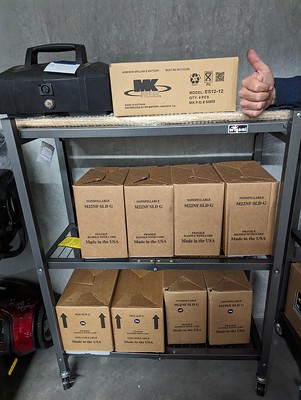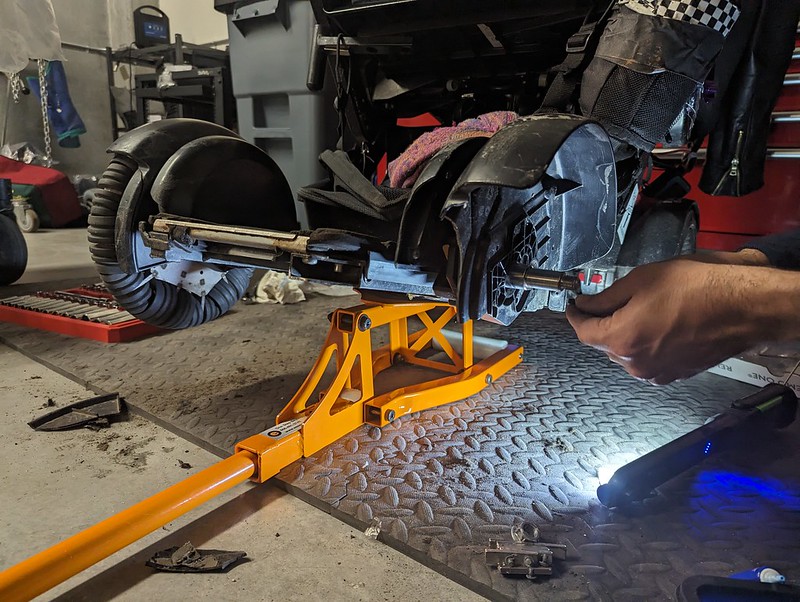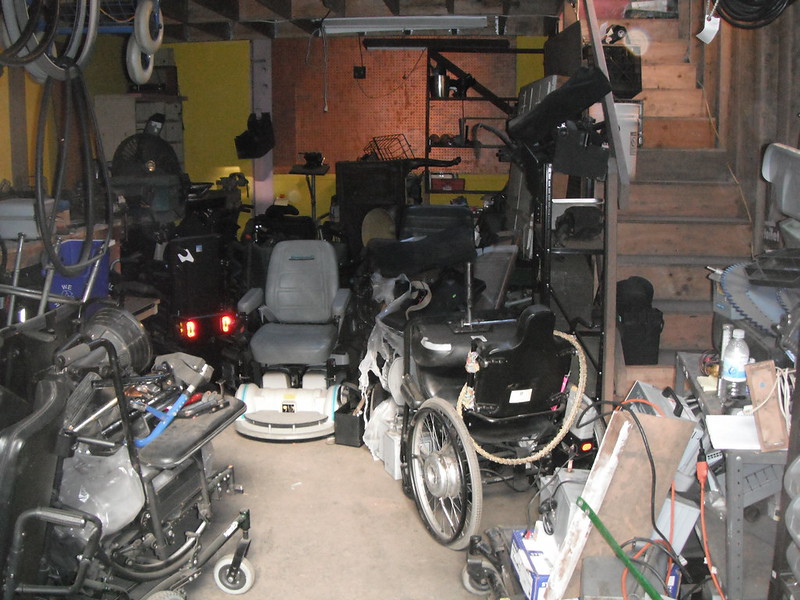San Francisco wheelchair repair program
If you’re out on the street and your wheelchair breaks down, you need immediate help. (You can’t always rely on Love and Magic!)
And similarly, if you’re stuck in your house because of a flat tire, wobbly wheel, bad battery, blown fuse, or whatever mystery problem your wheelchair has, what happens? In the East Bay in the Bay Area we have the great non-profit Easy Does It, which will come pick you up and fix your chair for free. (Shout out to long time repair expert John Benson, who is an amazing person and who supported their program for many years with his Secret Wheelchair Parts Warehouse!)
Now, finally, in San Francisco we have the Independent Living Center SF Wheelchair Repair program that does something similar! I went last week to the ILRCSF launch of the program and hung out with Vince Lopez, who is an experienced repair tech and all around great guy. Lana Nieves who heads up the organization welcomed around 40 of us to the spacious conference room, Vince talked about his experience as a tech, we toured Marisol’s assistive tech lending library, and also heard from Michael from Pride Mobility who was there to offer whatever resources and connections he can provide.

This new wheelchair repair center is funded by San Francisco Disability and Aging Services and is available to San Francisco residents, for emergencies and repair visits within the SF city boundaries. The repair program has limited hours (I think working daytime hours) and you can request either emergency help, or schedule an appointment, by calling their number at 415-609-2555 or emailing info@ilrcsf.org. Vince will come to you if that’s needed with a bag of tools. He can also provide rides to a safe location where you can transfer, in a wheelchair accessible van ride (provided free by Waymo) and even a loaner chair, powerchair, walker, or scooter if he has one available.

The program is also supported by many wheelchair manufacturers and by MK Battery. (You can get your batteries replaced! Free!!! At least for particular lead-acid scooter and wheelchair batteries they have stocked.)

One last nifty service, you can get your wheelchair washed down completely in their portable washing station. I noted it looks like something that is not too hard to build, made from super-sturdy plastic tarp/map base, PVC pipe, shower curtains, a hose, and a pump to drain the water out. (This kind of setup can be used in a kitchen or even a yard for people to wash in if their own bathroom lacks access.)

Murderbot’s spa day!!
After the event I got some help from Vince back in the shop. My Whill Ci front fenders break often, I’ve gotten them replaced several times, then lived with the brokenness and loud rattling for probably over a year now, sometimes temporarily fixing it with duct tape and Sugru.
Vince called Whill support, got them to email him the service manual (which I’ve asked for for YEARS and haven’t gotten!) and we got down on the floor to pop the wheels off and figure out what was wrong. While I was on the floor scooting around on my butt, I took the opportunity to wet-wipe the dust off the entire front of my chair.

Some foam tape, new screws, blue loc-tite, and some cleaning, vastly improved my broken fender and wheel situation. More calls, a quick trip to the nearby hardware store, and a lot of fiddling around fixed my chair! (I got to try a loaner powerchair while all this happened!) And Vince is continuing to investigate if he can wrangle a replacement joystick controller out of the company — another thing I have asked them for but he is apparently the wheelchair support tech whisperer, because he got actual help incredibly fast!
(While I get told to buy a new Model C2; sure, like I just am going to drop 3500 bucks when I could fix my current chair?!) Fortunately now we have California’s new Right to Repair law to support our efforts to maintain our incredibly critical assistive tech! So when I do get a new powerchair eventually, the manufacturer will have to keep its parts available for at least 7 years.
My chair’s fenders no longer rattle, which is great, so I can perfect my technique of me + Murderbot sneaking up on people on the sidewalk!


